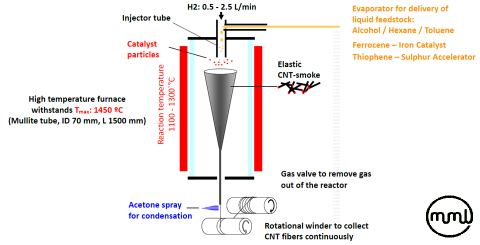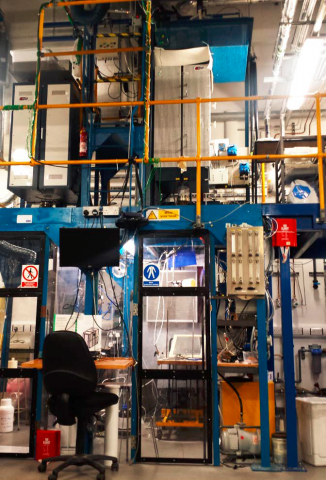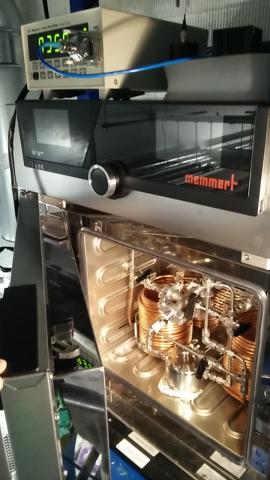This project aims to improve the process control and production stability of large carbon nanotube fibres through the addition of new sensors and better handling of sensor outputs and control input.
StudentSupervisor |
AdvisorDr Thurid Gspann Dr James Elliot |
Introduction
Since their discovery carbon nanotubes were expected to lead to the creation of next generation electrical and mechanical products due to their extreme properties, all while being composed of cheaply available carbon. In practice, while laboratory scale synthesis and chemistry has been widely explored bulk industrial production methods (low cost, high volume and scalable) have not caught up, partly due to the difficulty of translating individual nanotube properties to larger objects. The Macromolecular Materials Laboratory here in Cambridge has been tackling this challenge for the past decade through the development of their unique floating catalyst technique. The single-step continuous process uses the thermal breakdown on iron, sulphur and carbon compounds to form entangled nanotube ‘smoke’ which is mechanically drawn down and wound to form a film or condensed to form a thread with excellent mechanical and electrical properties.

Current Status
Through careful experimentation a variety of materials with excellent mechanical or electrical properties can now be produced, but the process of making them is still a ‘black art’ reliant on the tower operator to make small adjustments to the ‘recipe’ used. To move towards a more commercial implementation and better understanding of the process it is vital to monitor and control as many reactor parameters as is possible.

Future work
This project will unify the handling of sensor readouts and controller commands to enable better process traceability. Currently unmonitored parameters in and outside the reactor will be tracked with new sensing devices and used to create feedback loops for accurate control and a consistent output.
Work to date has included the design, installation and testing of an optical monitoring cell for the reaction catalyst ferrocene (pictured), and the testing of a commercial moisture sensor on the main gas line. The current short term focus is the selection of appropriate techniques and equipment (FTIR spectrometer) for live analysis of the gas mixture inside the reactor.

The project is in collaboration with the Macro-molecular Materials Laboratory here in Cambridge.

